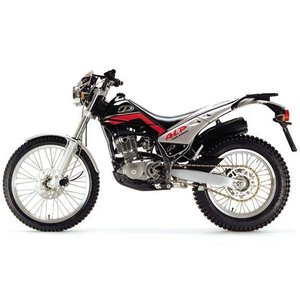Beta Alp 200 4T (2000–2008): A Lightweight Trail Companion That Defies Expectations

Introduction
The Beta Alp 200 4T is one of those motorcycles that quietly earns a cult following. Produced from 2000 to 2008, this Italian-designed trail bike blends simplicity, agility, and just enough power to make off-road adventures accessible without overwhelming newer riders. Designed as a bridge between casual trail exploration and serious technical riding, the Alp 200 has carved out a niche as a forgiving yet capable machine. After spending a day threading it through rocky paths, muddy forest trails, and even paved backroads, it’s easy to see why this bike remains a favorite among riders who value function over flash.
Design & Ergonomics: Approachable and Purpose-Built
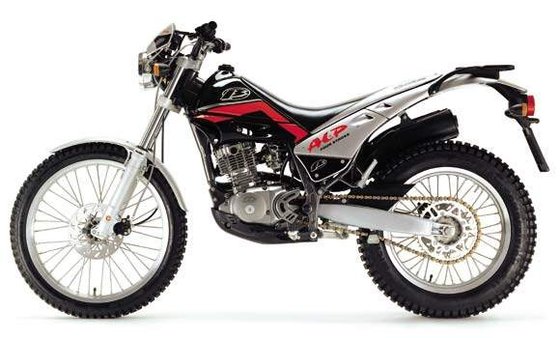
The Beta Alp 200’s design screams “no-nonsense.” Its steel double-cradle frame is slim and utilitarian, with bodywork that prioritizes durability over aesthetics. The seat height—ranging from 830–870 mm (32.7–34.3 inches) depending on the year—is low enough to inspire confidence for shorter riders, yet the narrow profile lets taller riders grip the tank comfortably when standing.
The cockpit is minimalist, with a basic speedometer, neutral indicator, and high-beam light. Handlebars are wide and upright, putting the rider in a natural position for technical maneuvering. At 101–103 kg (222–227 lbs) dry, the Alp 200 feels almost playful when lifted off the side stand. The 6.8-liter (1.8-gallon) fuel tank is compact but sufficient for half-day adventures, with a 1.5-liter (0.4-gallon) reserve for peace of mind.
Standout Feature: The combination of a 21-inch front wheel and 18-inch rear wheel (shod with 90/90-21 and 120/80-18 tires, respectively) gives the bike a balanced stance. It floats over loose gravel like a trials bike but remains stable on uneven terrain.
Engine Performance: Modest Power, Maximum Control

The heart of the Alp 200 is its air-cooled, 199cc single-cylinder engine. With a SOHC 2-valve configuration and a Mikuni BST 31 carburetor, it produces 11.2 kW (15 hp) at 7,750 rpm. Those numbers won’t set any speed records, but they’re perfect for trail riding. The motor thrives in the mid-range, delivering smooth torque that’s predictable on slippery ascents.
The 5-speed transmission is geared low, with first gear feeling almost like a crawler gear for navigating obstacles. On paved roads, the bike tops out around 90 km/h (56 mph), but it’s happiest at 50–60 km/h (31–37 mph). The clutch is light, making it easy to modulate in technical sections, and the electric/kick-start combo ensures reliability in remote areas.
Rider’s Note: The engine’s air-cooling system eliminates radiator maintenance worries, though it does protest on long uphill climbs in hot weather. Keep the oil fresh, and it’ll chug along indefinitely.
On-Road vs. Off-Road Handling: A Trail Specialist
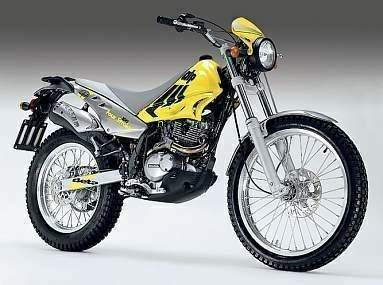
The Alp 200’s 1350 mm (53.1-inch) wheelbase and 298 mm (11.7-inch) ground clearance make it a master of tight trails. The suspension—170 mm (6.7 inches) travel up front and 180 mm (7.1 inches) at the rear—is softly tuned to absorb rocks and roots without feeling wallowy. At slower speeds, the bike feels telepathic, changing direction with a subtle shift of body weight.
On pavement, the narrow tires and soft suspension remind you this isn’t a street bike. The front 220 mm disc brake (2-piston caliper) and rear 200 mm disc (1-piston) provide adequate stopping power, though they lack the bite of modern ABS systems.
Test Ride Highlight: Descending a rocky incline, the Alp 200’s light weight let me dab a foot to adjust lines effortlessly. The rear monoshock stayed composed, even when bouncing over embedded stones.
Competition: How Does It Stack Up?
The Alp 200’s closest rivals include:
-
Yamaha XT225 Serow
Lighter and equally nimble, the Serow edges ahead with fuel injection in later models. However, the Beta’s suspension travel and seat height give it an edge in technical terrain. -
Honda CRF230F
The Honda packs more low-end torque but weighs 112 kg (247 lbs). For tight trails, the Alp’s weight savings make it easier to maneuver. -
Suzuki DR200SE
Similar in specs, the Suzuki prioritizes street comfort. The Beta’s trials-inspired geometry feels more at home off-road.
Verdict: The Alp 200 isn’t the fastest or most modern, but its balance of weight, suspension, and simplicity makes it a standout for learners and seasoned riders alike.
Maintenance: Keeping the Alp 200 in Peak Condition
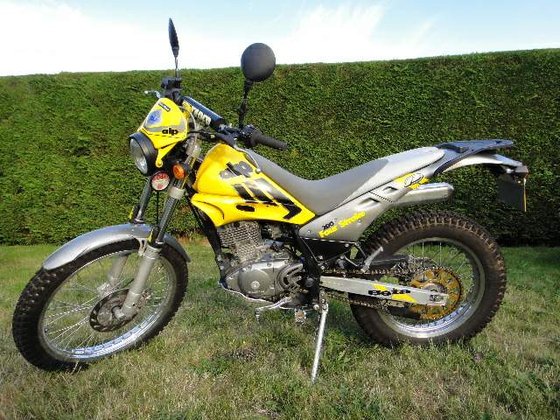
-
Oil Changes
The air-cooled engine relies on clean oil. Use SAE 15W-50 (850 mL without filter, 950 mL with). Change every 3,000 km (1,864 miles) or annually. -
Valve Adjustments
Check valve clearance every 5,000 km (3,107 miles). Intake and exhaust valves both require 0.08–0.13 mm (0.003–0.005 inches) when cold. -
Chain Care
The 104-link chain needs regular lubrication. MOTOPARTS.store offers weather-resistant lubes ideal for muddy conditions. -
Brake Fluid
Flush with DOT 4 fluid annually. Upgrade to sintered brake pads for improved bite during aggressive riding. -
Tire Pressure
Stick to 1.0–1.2 bar (14.5–17.4 psi) for optimal grip off-road.
Pro Tip: The Mikuni carburetor is reliable but sensitive to ethanol-blended fuels. Install an aftermarket fuel filter to avoid clogs.
Conclusion: Who Should Buy the Beta Alp 200 4T?
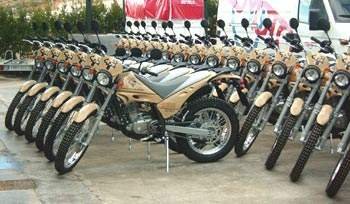
The Beta Alp 200 4T isn’t about brute force or cutting-edge tech. It’s about accessibility. New riders will appreciate its forgiving nature, while veterans can exploit its agility on technical trails. The lack of liquid cooling and ABS might deter some, but for those willing to embrace simplicity, it’s a timeless companion.
Whether you’re restoring a 2000 model or upgrading a 2008 variant, MOTOPARTS.store has the OEM and aftermarket parts to keep your Alp 200 running smoothly. From NGK DR8EA spark plugs to heavy-duty chains, we’ve got your back—so you can focus on the ride ahead.
Ride hard, explore often, and let the Alp 200 remind you why motorcycling is about the journey, not the destination.



Specifications sheet
| Engine | |
|---|---|
| Stroke: | Four-stroke |
| Max power: | 11 kW | 15.0 hp |
| Fuel system: | Mikuni BST 31 42AD carburetor |
| Max power @: | 7750 rpm |
| Displacement: | 199 ccm |
| Bore x stroke: | 66.0 x 58.2 mm (2.6 x 2.3 in) |
| Configuration: | Single |
| Cooling system: | Air-cooled |
| Compression ratio: | 9.4:1 |
| Lubrication system: | Forced with pump |
| Number of cylinders: | 1 |
| Valves per cylinder: | 2 |
| Dimensions | |
|---|---|
| Wheelbase: | 1350 mm (53.1 in) |
| Dry weight: | 103 |
| Seat height: | 830 mm (32.7 in, adjustable) |
| Overall width: | 830 mm (32.7 in) |
| Overall length: | 2150 mm (84.6 in) |
| Ground clearance: | 280 mm (11.0 in) |
| Fuel tank capacity: | 6.8 L (1.8 US gal) |
| Reserve fuel capacity: | 1.5 L (0.4 US gal) |
| Drivetrain | |
|---|---|
| Final drive: | chain |
| Chain length: | 104 |
| Transmission: | 5-speed |
| Maintenance | |
|---|---|
| Rear tire: | 120/80-18 |
| Engine oil: | 15W50 |
| Front tire: | 90/90-21 |
| Brake fluid: | DOT 4 |
| Spark plugs: | NGK DR8EA or NGK DR8EIX |
| Spark plug gap: | 0.7 |
| Forks oil capacity: | 0.62 |
| Engine oil capacity: | 0.95 |
| Engine oil change interval: | Every 5000 km or 2 years |
| Valve clearance (intake, cold): | 0.08–0.13 mm |
| Valve clearance check interval: | 24,000 km / 15,000 mi |
| Valve clearance (exhaust, cold): | 0.08–0.13 mm |
| Recommended tire pressure (rear): | 1.0–1.2 bar (15–17 psi) |
| Recommended tire pressure (front): | 1.0–1.2 bar (15–17 psi) |
| Chassis and Suspension | |
|---|---|
| Frame: | Steel double cradle |
| Rear brakes: | Single 200 mm disc, 1-piston caliper |
| Front brakes: | Single 220 mm disc, 2-piston caliper |
| Rear suspension: | Monoshock with adjustable spring preload |
| Front suspension: | Hydraulic fork, 38 mm diameter |
| Rear wheel travel: | 180 mm (7.1 in) |
| Front wheel travel: | 170 mm (6.7 in) |



